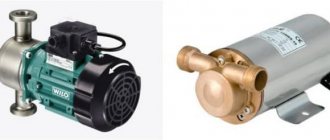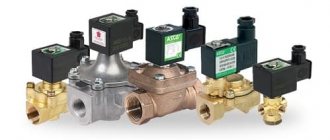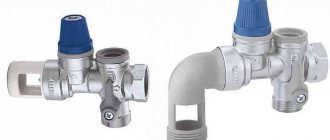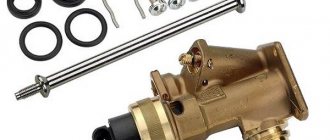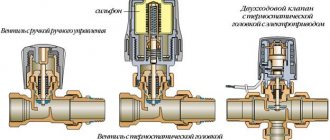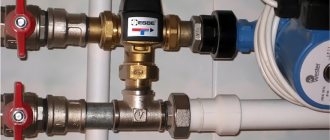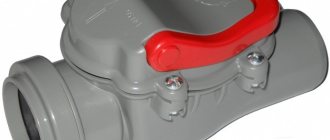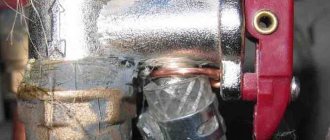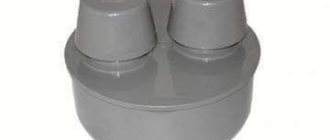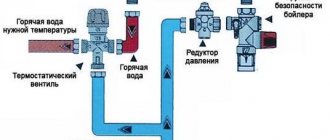Car owners who use gas fuel as an alternative to gasoline try to choose high-quality components. This will not only save on fuel, but also on the maintenance of gas equipment. Components from the Italian brand Lovato have proven to be reliable and durable.
One of the important components of the 2nd and 4th generation gas equipment is the Lovato electromagnetic gas valve. It is designed for timely opening and closing of the gas supply and is equipped with a filter that protects the fuel mixture from mechanical impurities.
Possible valve malfunctions
Any parts of the system are subject to breakdown. When it comes to a gas system, it is very important that all shut-off valves operate smoothly. The safety of gas equipment operation depends on this.
The solenoid valve is inexpensive, but it does not always make sense to replace it. There are breakdowns that require quick and inexpensive repair. Let's consider the most likely reasons for the failure of the EGC and the further algorithm of actions.
Foreign particles entering the valve
A common cause is contamination of the valve parts itself. This device is installed in the engine compartment, which is exposed to dust and dirt. In addition, there is a high probability of corrosion, scale can form, and debris can get inside the mechanism. As a result, it will jam. Basic disassembly and cleaning of foreign particles will help.
Filter element clogged
The filter may become clogged before the replacement period recommended by the device manufacturer. The coarse filter is not part of the solenoid valve mechanism, but only an auxiliary component of the gas equipment. But if it gets clogged, the EGC will not work stably. In this case, the car may not switch to gas at all. After changing the filter, the system's functionality is restored. If you do not wait for the critical moment, but change the filter element 2-3 times a year, the problem can be avoided. When the machine is used intensively, the filter is changed even more often.
What can be repaired without gas workers?
In the complex of boiler equipment automation systems, the gas valve is one of the most critical components, on which not only the efficiency of the boiler depends, but also the safety of the equipment and human living conditions. Incorrect functioning of gas devices very often leads to explosions and fires.
Solenoid valve malfunctions occur due to:
- line jump in the boiler power supply;
- the existence of sources of stray currents;
- blockage of the shut-off valve with foreign elements;
- presence of condensate in the gas pipeline.
If the work to identify and correct a gas valve malfunction may lead to a gas leak during repair or after, it is extremely important to contact the gas service and service center. Since this may be associated with loss of the right to warranty service.
However, there are a number of preventative operations that the boiler owner can perform independently, for example, adjusting the gas valve or purging it.
Gas valve purge process:
- Upon completion of stopping the boiler unit, remove the casing in accordance with the manufacturer’s instructions.
- The user must find the gas shut-off valve and its connector, indicated by a reddish circle - the point for releasing the air lock.
- It is forbidden to insert a needle into the hole, since it can easily pierce the valve, after which it will need to be replaced.
- Before checking if the valve is clogged, fill the syringe with air, press the nozzle firmly against the hole, and let the air in. If the action is performed without sound accompaniment or reaction, the connection does not have the required density. If the process is performed accurately, the user will hear a slight hissing sound.
- Check the result obtained, for example, by turning on the boiler.
- If the boiler lights up and the burner works, the fault has been eliminated.
- They assemble the gas boiler with their own hands using the same method that was used during disassembly: fix the display, and then fix the decorative casing.
Basic installation rules
The quality of subsequent operation of the valve depends on the installation process. Therefore, it is important to follow the rules when installing a thermal shut-off valve.
Next, we will consider the basic rules and regulations for installing KTP on a gas pipeline:
- Thermal locking devices for threaded connections should be installed only on lines with a pressure of no more than 0.6 MPa. Flange-type valves can and should be used on pipelines with gas pressure from 0.6 to 1.6 MPa.
- The flow capacity of the gas line must match the flow capacity of the valve itself.
- Installation is permitted only indoors to protect fittings that are not designed for high heat.
- It is not allowed to install KTP where adjacent elements raise the ambient temperature to 52 °C or higher.
- Once the installation process is complete, it is important to check the valve for leaks.
- The installed valve must be located in a place accessible to humans (for inspection and maintenance).
- The valve should not be exposed to various influences.
It should also be borne in mind that when transporting thermal shut-off valves, automatic operation of the mechanism may occur. Therefore, when choosing a device, it is important to check the mechanism.
If the gas distribution is complex, and there are several fuel consumers, and the objects are located in different parts of the building, then you will need to install valves on each branch.
And although these shut-off valves undergo thorough and numerous tests, and are also certified and approved for their intended use, every rule for their installation must be followed.
Types of Gas Valves
Solenoid gas valves come in different configurations and internal structures, but they are all divided into:
- Normally closed (NC). That is, if there is no voltage, the gas is shut off. These are basically emergency type valves.
- Opened in normal condition (NO). Gas flows freely if there is no voltage on the coil, and is closed when a control signal is applied.
- Universal type. In such devices, it is possible to switch the position of the shutter, which can be either open or closed, in the absence of power to the electromagnet coil.
According to the principle of actuating the shutter, the electromagnetic gas shut-off valve can be of indirect and direct locking methods. In the first case, the electromagnet core is helped by the pressure of the working medium in the event of the shutter being activated. In the second, the shutter is moved only by the electromagnetic force acting on the rod.
Gas valves can perform not only a protective function, but also a distribution function. In this sense, there are devices for different numbers of moves:
- Two way valves. These are the most common models of safety valves, having one inlet and one outlet. Their main function is to block the channel in any possible emergency situations.
- Three way valves. Control valves provide the ability to direct the flow of gas from an inlet between two outlets.
- Four-way valves can be integrated into various complex systems where there is a need to control energy flows through three different channels.
In addition to the above features of gas valve modifications, each specific device may have an original design that differs from the standard. Thus, some valves have internals specially manufactured to operate in aggressive conditions.
Construction of gas solenoid valves
Solenoid type gas valves consist of electrical and mechanical parts. The electrical system is used to control the system, while the mechanical system is the actuator. The entire circuitry of the device is located in the housing. The main operating components are the so-called seat and bolt. The seat is a hole through which the gas flow passes and is closed by a valve. The latter is designed like a plate or piston. The shutter is mounted on a rod, which is part of the electromagnetic system.
The electromagnetic system consists of a coil within which a core moves. It is connected to the bolt rod. The electromagnet itself has its own plastic housing and is located outside on top of the valve body. The operation of the electromagnet is counteracted by a return spring.
Solenoid gas valves operate on the following principle. In the initial state, when there is no supply voltage at the electromagnet terminals, the return spring holds the gate in a certain position. This position often corresponds to a closed channel in the valve. As soon as power appears, under the influence of magnetic force, the shutter core is retracted, overcoming the force of the return spring, and the shutter opens the channel. Some valves are brought into operating position by manually cocking (opening) the shutter. By using the current supplied to the electromagnet, the magnitude of the magnetic flux of the electromagnet can be adjusted. In this way, the operation of the valve is controlled by not opening it completely, thereby regulating the gas flow.
Types of thermal shut-off valves
There are currently only two types of thermal shut-off valves on the market. From the descriptions above it is clear that these are coupling valves and flanged valves .
Each type has its own size range. The main difference between one type and another is the scope of application. That is, threaded devices are used more often for domestic purposes, and flanged devices are used in industries.
This is explained by the conditional pressure indicators that the locking mechanisms can withstand during operation:
- coupling valves – 0.6 MPa;
- flanged valves – 1.6 MPa.
Both types have the same design including a spring, a locking element, a fusible insert and other elements. However, the difference is visible externally in the diameter of the passage hole.
If we talk about the scope of application in more detail, we should highlight the following places and industries depending on the type of KTZ:
- Threaded valves are used when installing gas pipelines in residential buildings, boiler houses, and industrial facilities for various purposes.
- KTP with a flange connection are used when installing gas pipelines in large boiler houses and large industrial facilities.
The second type of valve is in greater demand in the industrial sector due to the large diameter of the bore. If for threaded valves it varies between 15-50 millimeters, then for flanged valves this figure can be from 50 to 200 millimeters.
The connection between the inlet flange of the thermal shut-off valve and the mating flange of the pipeline must be sealed with a special heat-resistant gasket. It can withstand up to 900 °C in case of fire.
The gaskets in question are made of a special heat-resistant material. The composition includes reinforced graphite in a foil shell, as well as stainless steel from which this foil is made.
Valve for a gas pipe in an apartment: features of selection, installation and maintenance standards
Regular gas explosions in apartments cause concern for owners, residents and utility services. Installing a leak control system partially solves this problem: it helps prevent fire, explosion, and poisoning. The design, in addition to the alarm, must include a valve on the gas pipe, which shuts off the fuel supply if dangerous situations arise.
In this publication, we will get acquainted with the requirements of gas services for integrating such a device into the main line. Let's find out what types of valves can be connected to gas alarms and what standards they must comply with. Plus, we’ll understand the nuances of installing the device on a pipe.
Design efficiency
Installing an alarm and gas valve in an apartment does not guarantee 100% protection against leaks or unauthorized interference in the operation of devices. The system, depending on the installation location, turns off only a separate section of the gas pipeline or device.
But a leak is also possible on a common house line, so stopping the supply of fuel to one device cannot be called effective. False confidence in complete safety can provoke much more negative consequences. We recommend looking at information about how gas explodes in an apartment.
It is only truly effective to equip all apartments and premises in the building with a monitoring system. In this case, if there is a gas leak, the supply will stop throughout the entire pipeline.
Solenoid gas valves
Devices of this type belong to pipeline fittings and are used to distribute the gas flow and cut it off if necessary. They are widely used in both individual gas equipment and industrial ones. The device is controlled automatically under the influence of voltage.
Electromagnetic gas valves are installed at the inlet of the gas pipeline in front of the following consumers:
- boilers;
- geysers;
- gas ovens;
- automotive gas equipment;
- entering a pipe into a multi-storey building.
Most gas valves are of a closed design, meaning that when there is no voltage, the valve closes the pipe.
